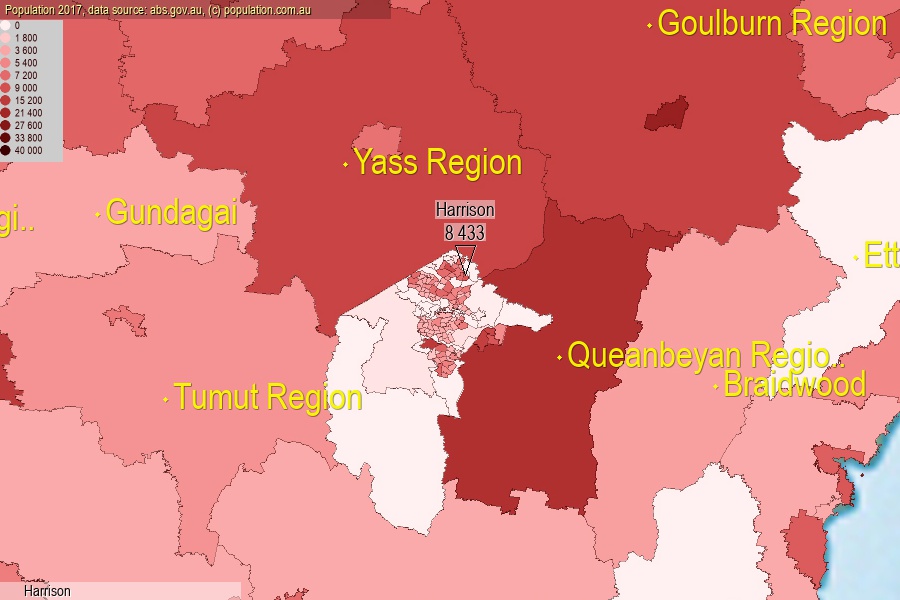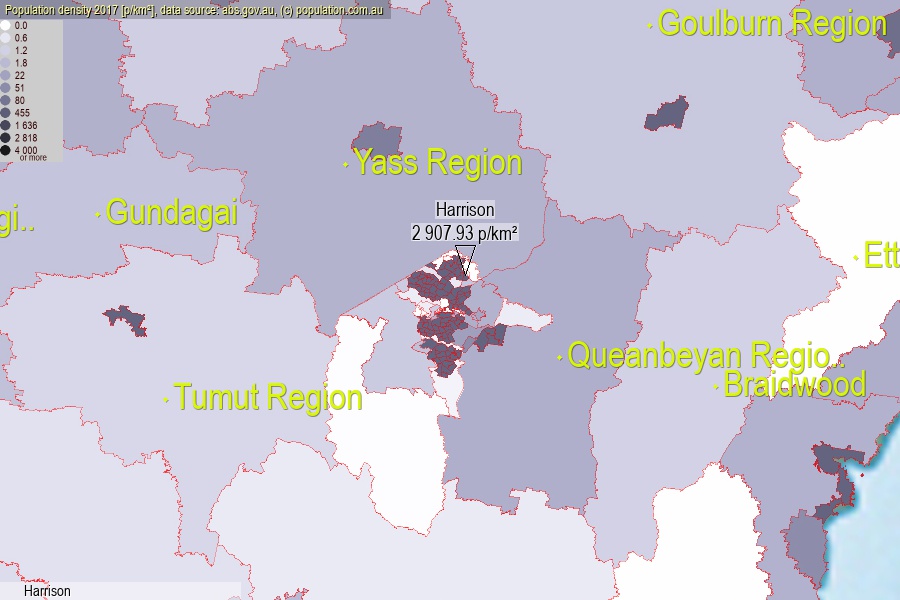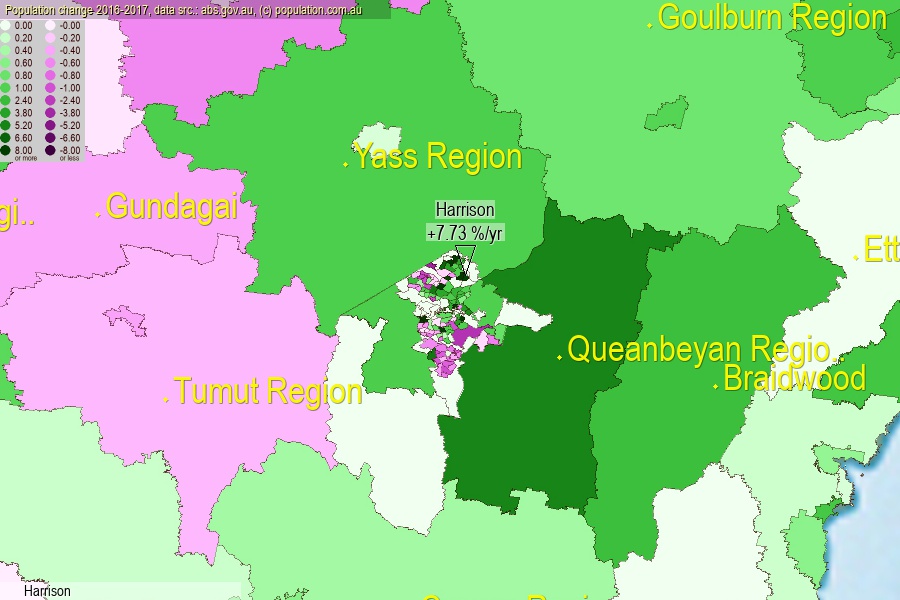 population.com.au
population.com.auLast official estimated population of Harrison (as Statistical Area Level 2) was 8 433 people (on 2017-06-30)[2]. This was 0.03% of total Australian population and 2.012% of ACT population. Area of Harrison is 2.90 km², in this year population density was 2 907.93 p/km² . If population growth rate would be same as in period 2016-2017 (+7.73%/yr), Harrison population in 2025 would be 15 298. [0]



Click to enlarge. Harrison is located in the center of the images.
Population [people], population density [p./km²] and population change [%/year] [2]
View borders » (new window) [4]
[1991-1992] 0.00 %/Yr.
[1992-1993] 0.00 %/Yr.
[1993-1994] 0.00 %/Yr.
[1994-1995] 0.00 %/Yr.
[1995-1996] 0.00 %/Yr.
[1996-1997] 0.00 %/Yr.
[1997-1998] 0.00 %/Yr.
[1998-1999] 0.00 %/Yr.
[1999-2000] 0.00 %/Yr.
[2000-2001] 0.00 %/Yr.
[2001-2002] 0.00 %/Yr.
[2002-2003] +188.89 %/Yr.
[2003-2004] +186.54 %/Yr.
[2004-2005] +121.48 %/Yr.
[2005-2006] +114.85 %/Yr.
[2006-2007] +142.03 %/Yr.
[2007-2008] +63.52 %/Yr.
[2008-2009] +24.06 %/Yr.
[2009-2010] +16.66 %/Yr.
[2010-2011] +12.41 %/Yr.
[2011-2012] +16.45 %/Yr.
[2012-2013] +11.42 %/Yr.
[2013-2014] +9.42 %/Yr.
[2014-2015] +12.20 %/Yr.
[2015-2016] +7.65 %/Yr.
[2016-2017] +7.73 %/Yr.
[0] Calculated with linear interpolation from officially estimated population
[1] Read more about SA2 and Australian Statistical Geography Standard (ASGS) on abs.gov.au
[2] Population data from Australian Bureau of Statistics (Population and density: 2017; change: 2016-2017)
[3] Digital Boundaries: Australian Statistical Geography Standard (ASGS) 2016.
[4] Border coordinates are simplifyed using Ramer-Douglas-Peucker algorithm.